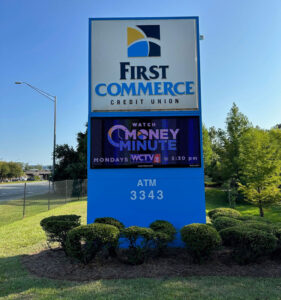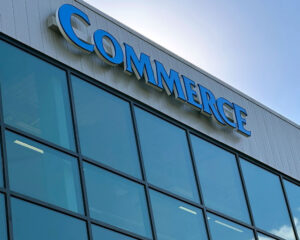 The signage industry is a rapidly growing and evolving landscape, driven by technological advancements, changing consumer behavior, and a focus on environmental sustainability. From traditional static signs to dynamic digital displays, each segment of the signage industry has unique characteristics that offer businesses different opportunities for success. In this article, we will take a comprehensive look at the various segments of the signage industry, focusing on digital signage, and examine the latest trends and statistics shaping this dynamic industry. By the end of this article, you will have a better understanding of the opportunities and challenges facing the signage industry, and how businesses can leverage these trends to stay competitive and succeed in this rapidly growing industry.
The signage industry is a rapidly growing and evolving landscape, driven by technological advancements, changing consumer behavior, and a focus on environmental sustainability. From traditional static signs to dynamic digital displays, each segment of the signage industry has unique characteristics that offer businesses different opportunities for success. In this article, we will take a comprehensive look at the various segments of the signage industry, focusing on digital signage, and examine the latest trends and statistics shaping this dynamic industry. By the end of this article, you will have a better understanding of the opportunities and challenges facing the signage industry, and how businesses can leverage these trends to stay competitive and succeed in this rapidly growing industry.
Traditional Signage
Traditional signage, which includes static signs, billboards, and vehicle wraps, remains an important segment of the signage industry. In 2021, the US sign manufacturing industry is valued at $10.2 billion and is expected to grow at an annual rate of 3.3% from 2021 to 2026. While digital signage is rapidly growing, traditional signage offers a cost-effective way for small and medium-sized businesses to reach local customers. According to a survey by FedEx Office, 76% of consumers have entered a store or business based solely on its signage. Additionally, 68% of consumers believe that a store’s signage reflects the quality of its products or services, highlighting the importance of investing in high-quality and highly visible signage to attract customers. Billboards remain a popular form of traditional signage, particularly for outdoor advertising. The US billboard advertising industry is expected to generate $8.1 billion in revenue in 2021, and the average billboard is seen by 68% of drivers and passengers, making them a highly effective form of advertising. Vehicle wraps are also a popular form of traditional signage, generating up to 70,000 impressions per day, according to the Outdoor Advertising Association of America. Overall, investing in high-quality and highly visible traditional signage can help businesses reach a wide audience and attract new customers.
 In Steps Digital Signs
In Steps Digital Signs
Implementing digital signage is a crucial step for businesses looking to improve brand awareness and increase sales. In fact, studies have shown that digital signage can increase sales by up to 33% and improve brand awareness by up to 48%. The Digital Signage Federation also found that digital displays are 47.7% more effective than static displays and 6.9% more effective than television advertising.
Choosing the right hardware and software for the digital signage system is also crucial for its success. The global digital signage market size was valued at USD 19.61 billion in 2020 and is expected to grow at a CAGR of 6.4% from 2021 to 2028. The market offers a wide range of digital signage solutions, including standalone displays, video walls, and interactive kiosks, allowing businesses to choose the most suitable option for their unique needs. By selecting the right hardware and software, businesses can ensure that their digital sign system is effective and provides real value to their customers.
Digital Signage Effectiveness
Digital signage has been shown to be highly effective in capturing the attention of customers and increasing engagement. According to a survey by Intel, digital displays capture 400% more views than static displays. Additionally, studies have found that digital signage can increase sales by up to 33% and improve brand awareness by up to 48%. Digital signage offers businesses the ability to display dynamic content, targeted messaging, and real-time information to customers, creating a more engaging and interactive experience. By leveraging the flexibility, interactivity, and dynamic content capabilities of digital signage, businesses can improve their brand awareness, increase sales, and provide a more engaging experience for their customers.
 Signage Industry Growth
Signage Industry Growth
The global signage industry is valued at $10.2 billion in 2021 and is projected to grow at a CAGR of 3.3% from 2021 to 2026. The growth of the industry is being driven by the increasing adoption of digital signage, which offers greater flexibility and the ability to display dynamic content. In 2020, the global digital signage market size was valued at $19.61 billion, and it is expected to grow at a CAGR of 6.4% from 2021 to 2028. The retail industry is the largest user of digital signage, accounting for over 40% of the market share by 2028.
The increasing use of LED technology in signage is also expected to drive further growth in the industry. According to a report by ResearchAndMarkets, the global LED display market size was valued at $6.4 billion in 2020 and is expected to reach $15.9 billion by 2026, growing at a CAGR of 15.6% during the forecast period. The adoption of LED technology in signage is driven by its energy efficiency, durability, and ability to offer greater flexibility in terms of design and content display.
Importance of Signage Quality and Visibility
High-quality and highly visible signage is crucial factors that impact the effectiveness of a business’s marketing efforts. A study by FedEx found that 76% of customers enter a store or business based on its signage, while a survey by Signs.com found that 50% of customers have driven by and failed to find a business due to poor signage. Additionally, 68% of customers believe that signage reflects the quality of a business, and a study by the University of Cincinnati found that customers perceive businesses with high-quality signage to be more trustworthy. Visibility is also important, with 35% of customers in a survey by FASTSIGNS stating that they would not have discovered a business without seeing its sign. Overall, businesses need to invest in high-quality and visible signage to improve their brand image, attract more customers, and increase their sales.
Eco-Friendly Signage Materials
The use of environmentally friendly materials in signage is not only important for the environment but also for meeting the demands of consumers. A survey by the Sustainable Green Printing Partnership found that 72% of consumers believe that it is important for companies to be environmentally responsible, and 69% of consumers are willing to pay more for eco-friendly products. This trend is particularly prevalent among younger generations, with a survey by Accenture finding that 83% of millennials and Gen Z are concerned about environmental sustainability.
To meet this demand, sign companies can use eco-friendly materials such as recycled plastic, bamboo, or biodegradable materials. For example, using recycled aluminum for signs can save up to 95% of the energy required to produce new aluminum. Additionally, eco-friendly signage materials can provide cost savings in the long term, as LED lighting can significantly reduce energy costs compared to traditional lighting methods.
 Eco-friendly signage is also an opportunity for businesses to demonstrate their commitment to sustainability and appeal to environmentally conscious customers. By choosing sustainable and renewable resources, businesses can not only reduce their environmental impact but also contribute to a more sustainable future. As consumers continue to prioritize sustainability, the use of eco-friendly signage materials is likely to become even more important in the signage industry.
Eco-friendly signage is also an opportunity for businesses to demonstrate their commitment to sustainability and appeal to environmentally conscious customers. By choosing sustainable and renewable resources, businesses can not only reduce their environmental impact but also contribute to a more sustainable future. As consumers continue to prioritize sustainability, the use of eco-friendly signage materials is likely to become even more important in the signage industry.
Conclusion
The signage industry is a rapidly growing and evolving landscape, driven by technological advancements, changing consumer behavior, and a focus on environmental sustainability. From traditional static signs to dynamic digital displays, each segment of the signage industry offers businesses unique opportunities for success. Digital signage is the fastest-growing segment of the industry, providing businesses with greater flexibility, interactivity, and dynamic content capabilities. LED signage offers highly visible and customizable signage, while eco-friendly materials help businesses appeal to environmentally conscious consumers.
Amid this rapidly evolving industry, it is crucial for businesses to stay up to date with the latest trends and insights to remain competitive and provide the best possible service to their clients. With the increasing importance of high-quality and eco-friendly signage, businesses that invest in these areas will be well-positioned to succeed. By choosing sustainable and renewable resources, businesses can not only reduce their environmental impact but also contribute to a more sustainable future while attracting environmentally conscious customers.
Overall, the signage industry presents numerous opportunities for businesses to improve their marketing efforts, attract more customers, and contribute to a more sustainable future. By staying ahead of the latest trends and insights, businesses can leverage the power of innovative signage solutions to drive growth, increase brand awareness, and create a lasting impact on their customers.






